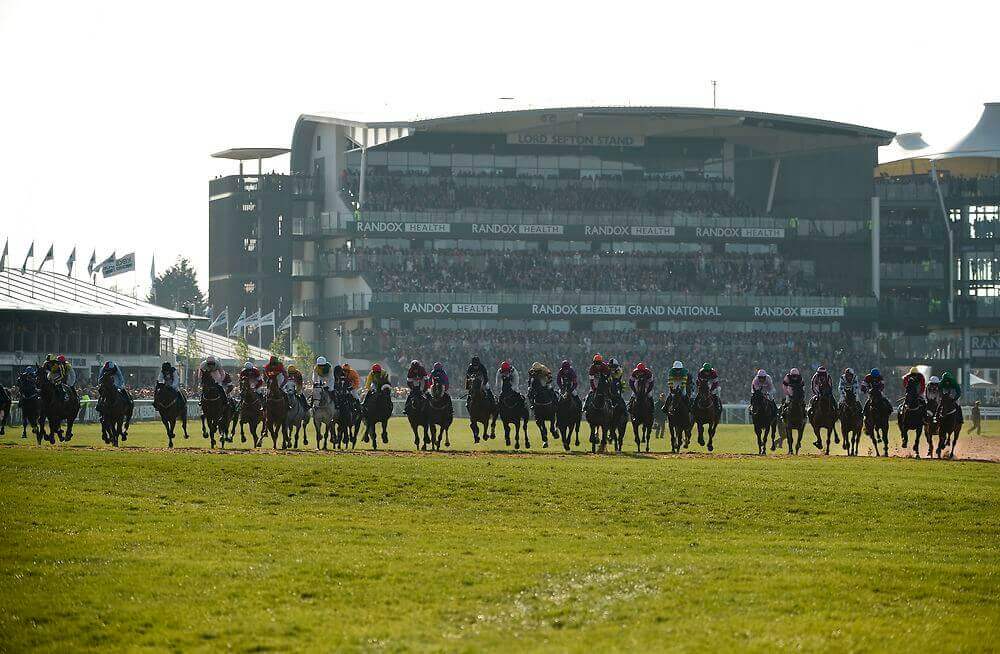Aintree unveils Grand National changes for 2024
Last Updated 26 Oct 2023 | By Enda McElhinney
RACING-ENG-NATIONAL Jockeys ride their horses after starting the Grand National horse race on the final day of the Grand National Festival at Aintree Racecourse on April 6, 2019. Oli SCARFF / AFP
The most famous steeplechase in the world, the Randox Grand National at Aintree, is set to undergo some significant change from 2024 onwards – with horse welfare at the heart of the planning.
Following its annual review of the Grand National, The Jockey Club, which runs Aintree racecourse, has announced a series of changes, supported by the British Horseracing Authority (BHA), as part of the “continued evolution” of the race.
The Grand National was the subject of protests from the Animal Rising group back in April, leading to the off-time being delayed and some protestors illegally entering the racecourse.
The headline alteration will see the maximum field size reduced for the first time since 1984.
Changes confirmed for Grand National
The Jockey Club has stated its primary aim is to reduce the risk of incidents during the race and, to that end, the maximum field-size for the Grand National will be cut from 40 to 34.
A large amount of focus was also centred on the first fence and the run from the start line to that first jumping test.
The Jockey Club has confirmed a decision to move the first obstacle 60 yards closer to the start and implement a standing start, which will apply to all races over the Grand National fences throughout the 2023-24 season.
This is aimed at reducing the build-up of potential speed for horses arriving at the first fence.
Earlier start to provide safest ground
In recent years, the Grand National start time was moved to a tea-time slot of 5.15pm, designed to maximise a television viewing audience.
This will be brought forward to help ensure Aintree can provide optimal ground conditions, alleviating concerns over drying ground throughout the day in what can typically be April sunshine.
Other safety changes include alterations to the alignment of the running rail on the inside of the course to assist with the early capture of loose horses and reducing fence 11 by two inches, while horses will no longer be led by a handler on-course during the parade in front of the grandstands.
Welfare to the fore
Nevin Truesdale, chief executive of The Jockey Club, said the changes to the Grand National are testament to the “relentless focus on welfare” surrounding the race from its organisers and those within racing.
“I believe that a competitive, fair and safe Randox Grand National is one of the best ways of ensuring the sport continues to thrive for generations to come and remains an important part of Britain’s culture and economy,” Truesdale said.
“That means our sport, like many other sports have done, needs to recognise when action needs to be taken to evolve because the safety and care of horses and jockeys will always be our number one priority.
“In making these changes at Aintree we are underlining our relentless focus on welfare and our commitment to powering the future of British racing.”
Dual Randox Grand National-winning trainer Lucinda Russell, who saddled One For Arthur (2017) and Corach Rambler (2023) to success in the Aintree spectacular, gave her support to the changes announced.
She said: “I think these changes are a clear sign again that Aintree and The Jockey Club continue to be proactive in trying to support the Grand National and the wider sport of horse racing.”




